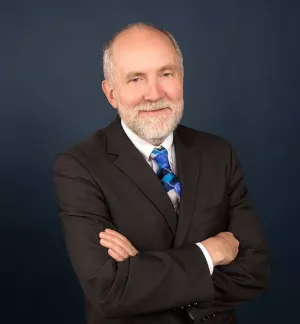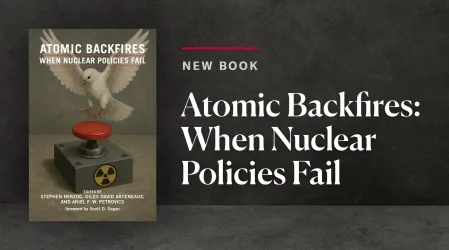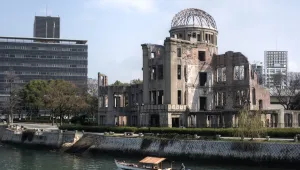On the eve of the Nuclear Security Summit in Seoul, South Korea, a new study finds that an international initiative to secure all vulnerable nuclear stockpiles within four years has reduced the dangers they pose. But the new analysis, by researchers in Harvard University’s Project on Managing the Atom, also concludes that much will remain to be done to ensure that all nuclear weapons and material are secure when the current four-year effort comes to an end.
“At the end of four years, the global risks of nuclear theft will be significantly lower than they were before,” said co-author Matthew Bunn, associate professor of public policy at Harvard Kennedy School. “But there will still be a great deal left to do to make sure that all the world’s stocks of nuclear weapons and the materials needed to make them are protected from the full range of plausible terrorist and criminal threats – in a way that will last.”
The other co-authors of the report are Martin B. Malin, executive director of the Project on Managing the Atom in the Kennedy School’s Belfer Center for Science and International Affairs, and Eben Harrell, research associate in the Managing the Atom project. The study, “Progress on Securing Nuclear Weapons and Materials: the Four-Year Effort and Beyond,” was released in advance of the Seoul summit on March 26-27, 2012, being attended by leaders or senior officials from 54 countries and four international organizations.
The researchers note that since President Obama launched the four-year nuclear security effort, the United States has helped remove almost 1,000 kilograms of weapons-usable highly enriched uranium (HEU) from research reactor facilities, eliminated HEU entirely from six countries, and helped 14 HEU-fueled reactors move away from the use of weapons-usable fuel. More countries have ratified key nuclear security treaties; international recommendations have been strengthened; and efforts to strengthen nuclear security culture, provide adequate training, and exchange best practices in nuclear security have all been expanded. These efforts have reduced the threat of nuclear terrorism. The report says that in a very real sense, the eliminated material represents bombs that will never go off.
But significant challenges remain: Some 120 research and training reactors still use highly enriched uraniumfor fuel or targets; only a modest number of countries have substantially strengthened their nuclear security rules and procedures; and the global governance of nuclear security is still weak.
In Pakistan, the researchers conclude that the risk of nuclear theft is worsening, as the risks from a swiftly growing stockpile of nuclear weapons and increasingly capable adversaries offset nuclear security improvements.
In Russia, the report finds that nuclear security has improved dramatically since the 1990s, but there are still weaknesses that might be exploited by a sophisticated conspiracy – and Russia has the world’s largest stockpiles of nuclear weapons, plutonium, and HEU, located in the world’s largest number of buildings and bunkers.
The researchers outline a range of next steps that the international community should take to further strengthen nuclear security, many of which can be accomplished before the next nuclear security summit in The Netherlands in 2014, including:
- Establishing national rules and procedures that ensure that all nuclear weapons and weapons-usable nuclear materials are protected at least against a modest group of well-armed and well-trained outsiders, a well-placed insider, and both outsiders and an insider working together. Countries facing more capable adversary threats should put additional security measures in place.
- Drastically reducing the number of locations where nuclear weapons and their essential ingredients exist, so that higher levels of security can be achieved at lower cost. Over the long term, the researchers call for phasing out the civilian use of HEU.
- Continuing high-level discussions of nuclear security cooperation after the nuclear security summit process comes to an end, perhaps through regular ministerial-level meetings.
Complacency about the threat, the authors argue, is the biggest obstacle to rapid action to improve nuclear security. They call for a range of steps to address this complacency, from discussions among intelligence agencies about the threat to tests to check the real performance of nuclear security systems against intelligent adversaries trying to find ways to defeat them. ”The international community needs to establish a culture of continual improvement in nuclear security and sustain it for as long as nuclear weapons and weapons-usable nuclear materials exist,” said co-author Eben Harrell, a research associate at the Project on Managing the Atom.
The report is part of a broad package of materials from the Belfer Center on the nuclear security effort and the nuclear terrorism threat, available at http://www.nuclearsummit.org.
“The nuclear security summit process has done a terrific job of bringing high-level attention to nuclear security,” said co-author Martin Malin, the Executive Director of the Project on Managing the Atom. “But we must ensure political leaders continue to focus on strengthening and sustaining nuclear security even when there are no major summits.”
Bunn, Matthew, Eben Harrell and Martin B. Malin. “Progress on Securing Nuclear Weapons and Materials: The Four-Year Effort and Beyond.” March 2012









